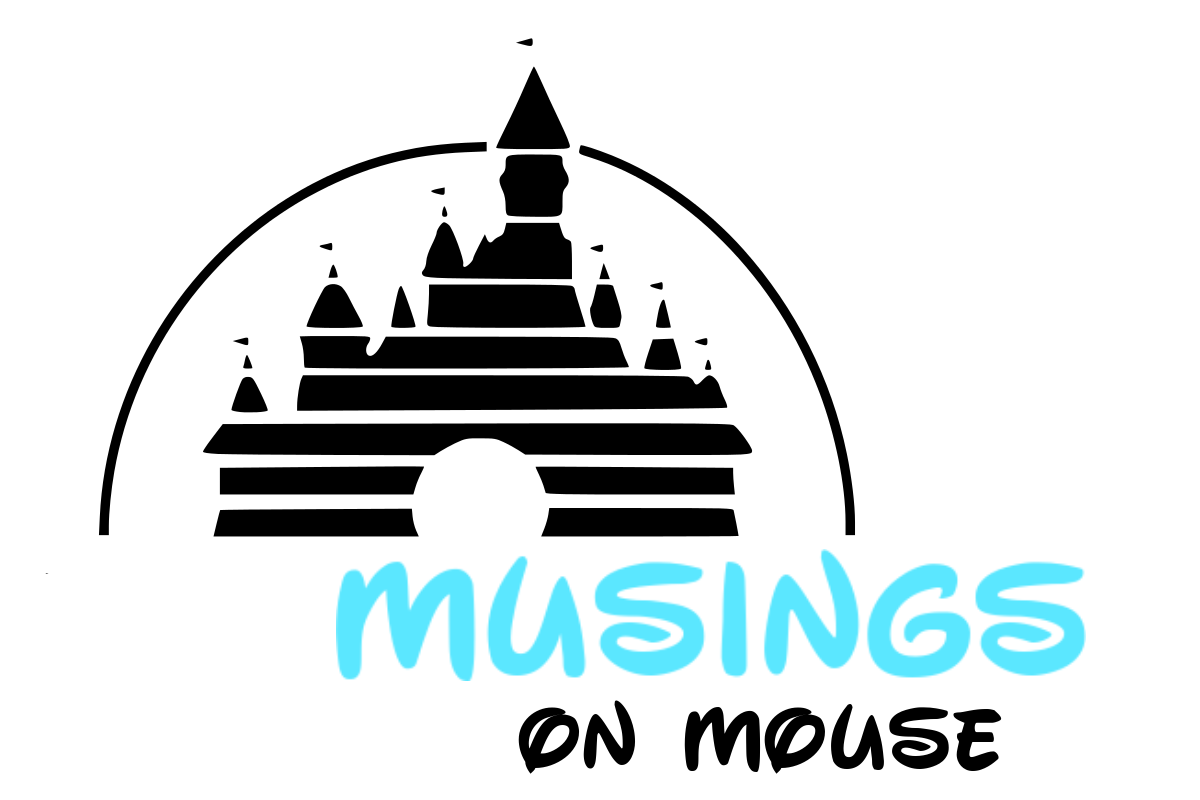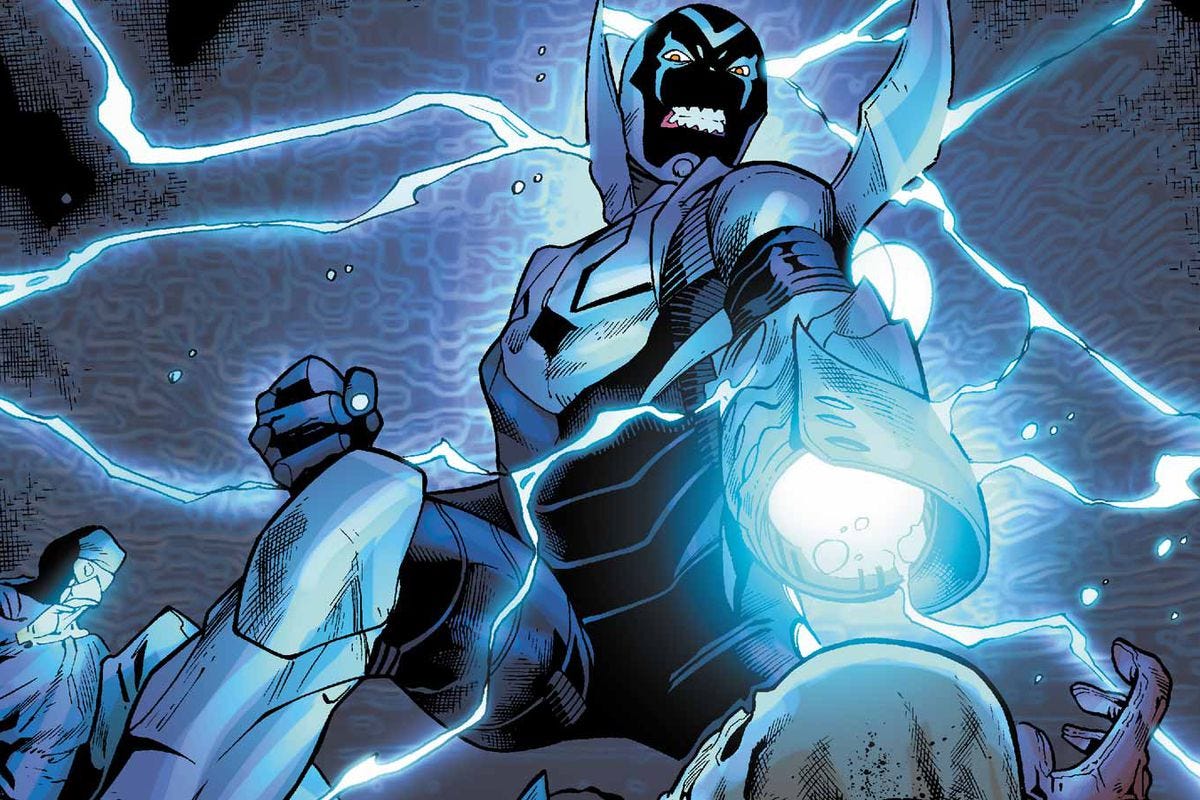Disney+ Premium, the future of Premier Access?
What happens to Disney's PVOD offering when theaters are "fully" back?
This past weekend, I had an interesting conversation with friends about our spending habits.
Just weeks into a rejuvenated New York, where the vaccination rate hit 70%, the number of new cases are low, and everything had reopened, our wallets were feeling the pinch. We forgot how expensive it can be to actually live in New York City, not just live in it. Eventually, the conversation came around to movies. I asked if they wanted to see F9 and Black Widow in theaters. Some were an obvious yes, buying tickets the day they went on sale for opening night.
Some, however, posed a different question: what if we got everyone together for drinks at someone’s apartment and rented Black Widow for $30 via Premier Access? If there are six people, it’s only $5 a pop. And we can make our own snacks, drink our own beer. It could be just as fun watching the movie on a decent television for just $5 instead of masking up for the subway, paying for overpriced food, lining up for bathrooms, and then possibly spending even more money at a bar after the fact.
I imagine if you’re a family of four or five, the same question comes up. Is Black Widow the movie that you decide becomes the weekend $100 treat, or is it something watched at home for a fraction of the price so something else can be enjoyed? If the question is about the cost of an experience, where do movies fall into that bucket in a post-COVID moment (not that we’re 100% there yet)?
There’s no wrong or right answer, but it did get me thinking about what role Premier Access plays for Disney+ — especially as CEO Bob Chapek tells analysts and investors that Premier Access strategy is still being figured out. Does Premier Access continue to exist beyond 2022 or 2023? Is it just another revenue option for Disney that comes at virtually no extra cost? Or does Premier Access disappear, perhaps after an internal evaluation discovered that Premier Access was cutting into theatrical revenue (as is to be expected) but not enough to make both ventures worth it.
I don’t have any insider information on what Disney is thinking (although if anyone from Disney would like to share, I’m around), but I do have my own thoughts on what could play out. There are a few strategies I can see Disney implementing going forward, after theater attendance returns to at least pre-COVID levels (which, as a reminder, was not great):
A new Disney+ subscription tier that includes Premier Access titles (1/2)
A home for mid-range budget movies based on popular IP that don’t need theatrical releases (Think: Solo) (2/2)
A cheaper tier around $10 that acts as a “First PVOD Window” for subscribers after a movie plays exclusively in theaters for 45 days
It disappears altogether (we’ll talk about this in a second)
Disney+ Premium
The most obvious answer seems to be incorporating Premier Access into Disney+ as part of a Disney+ Premium subscription tier. Instead of paying $8 a month, customers could spend $15 (on par with HBO Max and Netflix’s most popular tier) for access to the streaming service and receive Premier Access movies when they’re available for no extra cost.*
*Of course there’s an extra cost, but when it’s tied into a subscription fee, people think of it as free despite that not being the case.
Now, $7 extra per customer is a far stretch from $30 upfront. And if this was a simple box office for box office formula, it would make no sense. But streaming is a game of consistent, recurring revenue at increased prices over time. Keep people subscribed through providing decent quality and quantity of entertainment, increase prices incrementally, boost ARPU (average revenue per user/customer) and, hopefully, build a profitable business.
We can assume that Premier Access is enough of a success for Disney+ that Chapek and his team have continued to use it as a means of distribution while watching how vaccination rates around the world are doing and how case numbers are fluctuating. For “consumers that are a little leery still about going into a packed theater, they can go ahead and watch it in the safety and convenience of their home,” Chapek told analysts on an earnings call in May when asked about Disney’s strategy for Premier Access as theaters start to reopen.
“In terms of going beyond this fiscal year, we've not announced exactly what our strategy is going to be in terms of which titles will be theatrical plus Disney Premier Access, which ones will be direct to Disney+, or which ones will go into theaters,” Chapek added. “But right now, we've only called those films that are in this fiscal year because of the relatively fluid nature of the recovery of exhibition.”
All these things paint a very abstract image: people are using Premier Access, but we don’t know if it’s enough for Disney to commit to it being a continued core part of its DTC strategy, which is dependent on theatrical recovery over the next year or two. If Premier Access was over-performing, Chapek and co. might be more likely to commit to it beyond the next fiscal year. If Premier Access was performing abysmally, Chapek and co might use its earnings calls to drive home it’s a temporary band-aid to hold the company over but “they’re committed to supporting exhibitors and the theatrical window going forward” or something along those lines.
What’s far more likely is that Premier Access is doing fine. Not great, not terrible. Fine. People are interested in watching a new movie at home, or at least having the option to do so. Black Widow will be an interesting experiment, specifically seeing if people who venture out to theaters to watch the movie will also buy it at home. I know this is the case for myself.
Here’s the thing: if they’re already subscribed to Disney+ (and if they’re paying $30 at home to check out a new Pixar or Marvel movie, they’re more than likely already subscribed to Disney+), they might be willing to pay more per month to watch a new movie at home “for free” the minute it’s out. If there’s a new Premier Access title each month, too, that just makes the “deal” even sweeter.
Cruella garnered roughly $20.5 million on Disney+ over the first four days, according to research collected by SambaTV and as reported by Deadline. This isn’t the whole picture, of course, and shouldn’t be taken as such. But that number comes from about 686,000 households in the US paying for the movie. As it stands now, Disney makes about $4 per customer on Disney+. On those 686,000 households, Disney already makes about $2.7 million per month from Disney+ subscriptions. Add in the aforementioned $20.5 million collected via Premier Access and it’s a total of $23.2 million during the month it’s available.
But this is only for a limited time as Premier Access titles last about a month. Let’s say Disney pulls in an additional $25 million throughout the month, thanks to some stragglers and those who haven’t pirated it or shared. Including ARPU subscription revenue for the year (that $2.7 million times 12), and the Premier Access sales, this works out to be about $80 million.
Bear with me on this next part. It’s all going to be hypotheticals.
So: hypothetically, Disney+ Premium has an ARPU of $10. This is more than double the current $4 and comes with a subscription increase of $15 a month. That ARPU is in-line with HBO Max’s ARPU figure ($11.72) for a $15 plan, and just under Netflix’s ARPU ($14.25 in the US and Canada, but Netflix has a more expensive 4K plan). Let’s say $10 and not $11 taking into account other products like Disney+ HotStar, which leads to weaker ARPU. (Disney’s chief financial officer Christine McCarthy told analysts in May that “excluding Disney+ HotStar, ARPU was $5.61” and ARPU should increase with global price increases, though.)
Again, this is a game of hypotheticals. If I had an Excel sheet, I’d throw it on there and try new figures. But I already have too many Excel sheets going, and it’s more fun to play this game. If we take this hypothetical figure then this creates an annual revenue of $82.3 million. That’s neck and neck with the $30 Premier Access option — but the perceived value for subscribers, the heart of subscription products, sees a new top-of-the-line Disney movie available “for free” alongside other content, like Loki, Monsters University, and The Bad Batch.
Most importantly, the Disney+ Premium subscription — through new movies and anticipated series — means that churn remains low. This is key for a business dependent on ARPU growing alongside its customer base. Some customers may cancel their Disney+ subscription after watching Cruella, waiting for the next big thing they’re interested in (perhaps Black Widow). It seems unlikely, but building that perceived value of new, big movies and TV shows into the subscription price makes it a much easier sell, both in getting customers and keeping them. Disney+ at $15 becomes a necessity for families, Marvel and Star Wars fans, and other customers, instead of an option.
The next question is what type of movies would get the Premier Access treatment. This type of method isn’t going to work for big Marvel and Star Wars movies when theaters return to some sense of pre-COVID normal and Disney wants to make $1 billion at the box office. There’s a reason certain theaters are seemingly less interested or have altogether stopped offering private theater rentals for new movies. Why rent a theater for $250 so 20 people can watch F9 when that theater can sell 150 seats and earn $2,250?
While those movies can move to Disney+ after playing in theaters for 45 days (let’s say for a month of exclusivity before they head to other premium video on demand offerings like Amazon and iTunes), they’re not what’s going to premiere on Disney+. Some films like the Disney live-action or non-Pixar sequels may, but the Disney+ Premier Access plan is based on exclusive, theatrical-caliber films based on popular IP.
Cruella does make sense for Premier Access. So does Raya and the Last Dragon. Jungle Cruise is a possibility. As theaters start to return around the world, and Disney tries to capture the dominance it had just two years ago, movies that demand audiences in theaters will return there exclusively for 45 days. Take Shang-Chi and the LEgend of the Ten Rings or The Eternals. Everything else becomes “optional,” which is executive code for, “You’re going to give us money somehow — you choose.”
All of which ties into the next half of this strategy: the pipeline.
Not everything needs to go to theaters
I love talking about Solo. Mostly because I really like Solo, but also because of what Solo became for Disney: a reminder that while Star Wars fatigue isn’t real, there are movies — even Star Wars movies — that don’t need to go to theaters.
Then CEO Bob Iger credited Solo’s unsuccessful box office run (just under $400 million globally) in 2018 to a bit of fatigue, but the turnout for Mandalorian just one year later proved that Star Wars fans were hungry for new, non-Skywalker storytelling. Solo was released just five months after The Last Jedi, and fans were still debating that by the time they were being asked to spend more money at theaters on a new Star Wars movie. Hard sell — especially for a movie that wasn’t getting rave reviews, plagued by creative and executive problems, and wasn’t an immediate “get into your car and go” sell.
If Solo had been released in 2020, however, as an exclusive on Disney+, would that have brought in more curious subscribers? Would they sign up for a $15 Disney+ account to watch the film? Would Solo, leading into a new Mandalorian season or Mulan keep people from canceling their subscription?
My assumption to all these answers is yes. Solo, as a premium addition to a subscription service people already have or are thinking of signing up for, becomes a catalyst for Disney+ to grow and an upgrade option for current customers who want to see Donald Glover as Lando Calrissian (as I did). Since it’s also going to Disney+, the company can save on budget and marketing. Much like HBO Max’s $15 plan becoming the “premium” version, which currently uses day-of movie releases (Godzilla vs Kong, Suicide Squad, Dune) as a selling point for people to pay $15 a month, instead of the ad-supported $10 option, these types of movies become a key selling point.
Marvel has more than 7,000 characters. Disney owns the majority of film and television rights. Not every Marvel character is going to get a big screen movie or a trilogy. Not every Marvel character is going to get a TV show. There are a number of Marvel characters, however, whose stories can be explored through smaller budget films that tap into an active fanbase hungry for more, but doesn’t require anything outside the purchase of a premium subscription.
DC and WarnerMedia (soon to be Warner Bros. Discovery) are already planning around this concept. Movies like Blue Beetle and Batgirl will reportedly head to HBO Max as exclusive titles, giving fans something to chew on alongside a reason to remain subscribed. These will likely have a substantially smaller budget and marketing campaign, but as long as the quality is decent and taps into a universe that people love with a fresh feeling, it might be enough to keep people coming back. In 2021, a $250 million budget doesn’t automatically translate to good and sometimes smaller is better.
That’s Marvel and DC. Add in Star Wars or Harry Potter and there’s enough franchises to mine from; after all, they’ve already been doing it, but this would create a feeling of premium entertainment for a low cost of a monthly subscription not much more than Netflix’s most popular plan. And Netflix doesn’t have a version of Marvel, Star Wars, DC, or Harry Potter.
These types of films designed for Disney+ also help with the trickiest detail: talent deals. When WarnerMedia decided to move its 2021 slate to a hybrid release model, it reportedly cost the company more than $200 million to soothe over talent who are promised additional payment based on box office performance. If a movie is on HBO Max, that likely cuts into the overall box office performance and talent is now questioning how much they’re being screwed over. WarnerMedia also didn’t give anyone a heads up, which made everything much worse.
Heading into 2022 and beyond, talent understands that landscapes are changing. Theatrical windows are shorter, and some movies are shifting to streaming exclusively. If Disney’s plan for Premier Access includes negotiating on behalf of a fixed rate — because there’s no additional fee beyond the monthly subscription — then there are less concerns around ruining relationships with talent, collecting negative public press, and figuring out multiple payouts.
I wrote previously about how many of Disney’s theatrical films will shift to streaming and we’ll talk less about it because they won’t be public changes. Unlike the pandemic, which saw a news alerts and discourse around every single title that vacated the theatrical calendar in lieu of playing somewhere else, these will be internal decisions. Yes, we want to do a new Enchanted movie. No, we don’t think it will hit $700 million at the box office. Yes, we need content for Disney+. 1 + 1 = 2.
Remember when Warner Bros. launched an internal studio designed for mid-budget movies that would stream exclusively on HBO Max, only to “phase it out” less than a year later? Warner Bros. isn’t going to stop making streaming exclusive movies with the same objective, but they won’t be labeled as budget films. “Premium” is just perceived value. Don’t tell customers what they’re getting are films that didn’t make sense for theaters; sell them as big exclusives for streaming services that are the most important part of a company’s future, and all of a sudden something goes from a “huh” to a “must-watch.” Using that in accordance with the world’s most beloved brands, works doubly so.
(As always, I am not trying to provide comment on what this means for the future of film — there are much stronger, smarter critics who beautifully write about this near daily. I’m just playing out some strategic thoughts.)
That’s my strongest prediction for where Premier Access is heading over the next few years, but there are two other less likely but still potential candidates I want to touch upon very quickly before I leave you.
A new “cheaper” PVOD option
The goal with anything on Disney+ is to get people to and stay on Disney+. That’s the main goal. If successful, supplementary positive side effects including people spending less time on competitors' platforms (and therefore less likely to cancel) while also spending money on other parts of a company’s business (vacation at Disney World, buy a new Star Wars game, buy a Loki plushie, etc) occur.
For this method to work, the subscriber has to feel like they’re completely winning out. A movie like Black Widow plays in theaters for 45 days. It makes $500-700 million globally. After those 45 days, the movie hits Disney+. Instead of living there for free, Disney charges $10. This is cheaper than the $30 premium and is offered as a way for Disney+ subscribers who didn’t want to head to a theater to spend $100 on a night out for the family to experience it at home for 10% of the cost.
This option benefits a group of customers who might see value in spending $10 for a night of entertainment with friends and family, but doesn’t cut into the box office run. Especially since most films make the majority of their box office revenue within the first four to six weeks of release (or, the reason why studios and theaters likely agreed to 45 days of exclusive windowing).
A $10 exclusive window before a top-tier blockbuster goes elsewhere for $6 to rent, like an iTunes or Amazon for a couple of months, is one way of amassing some extra revenue. The issue is that it’s not very consumer friendly, even at a lower price point. If customers have to wait 45 days for a movie to leave theaters, and then spend an additional $10 on top of their Disney+ subscription to watch the movie, it feels like overkill. It feels like Disney is trying to make $10, and the goal is to always make it seem like a company is not just trying to make an additional $10.
Plus, this only makes the concept of Premier Access cloudier. It’s not really premier access if it’s six weeks after a movie comes out and only 30 days before it heads to iTunes. If the goal is to lean into consumer satisfaction to ensure they stick around month after month (and spend money on other Disney things, like t-shirts and cruises), figuring out the pros and cons of trying to make an additional $10 that might bring in $10-$30 million should be weighed more heavily.
Which leads to the next, and final, possibility I can think of: getting rid of Premier Access altogether.
No more Premier Access
I can somewhat picture Bob Chapek sitting in an earnings call three years from now, announcing that Disney is fully recommitting to the theatrical experience and, as such, Premier Access is disappearing. Exhibitors cheer. Commentators write ad nauseam about the importance of theaters to developing franchises and a studio’s business. Things return to “normal.”
Except we all know it would be Chapek and team admitting that Premier Access didn’t work, and it didn’t make sense to keep going. Do you see this happening? I sure don’t — in part because while Premier Access isn’t the be-end-all of distribution strategy, it’s not flailing. Take Cruella. During the film’s opening weekend, there was a 37% increase in Disney+ signups compared to the benchmark reference point (previous eight weekends from Cruella’s release), according to data from Antenna provided to Musings on Mouse. Of those signups, about 18% purchased the film.
Now, this is about 58% as many purchases as Mulan in September 2020 and 72% as many as Raya and the Last Dragon in March 2021, but that still represents a group of customers in the United States who will sign up and spend an additional fee on Disney+ to watch a new movie. Disney isn’t just going to sacrifice that revenue. But the package has to change to become more appealing.
It’s why the subscription offering makes the most sense (at least to me). This increases monthly, recurring revenue, makes the product feel like an actual advantage for consumers instead of a money grab, acts as a lane for mid-budget and IP-reliant movies that might not play as well in theaters, and still gives subscribers the sense they’re getting something “premium” as part of their plan. Disney can keep that $8 a month plan, but offer the $15 premium version for people who want more exclusive content and premier access to certain films, ensuring over time there’s a new movie every month.
(This, again, leads to other problems such as ensuring quality of those films and protecting core brands, but, again, that’s a whole other essay.)
I don’t think Premier Access will go away, but I do think it will change into something that’s more heavily baked into Disney+. It’s clear, based on the company’s decision to move Black Widow and Jungle Cruise to hybrid releases, that executives are waiting to see when theaters are “fully” back, and when Premier Access as a strategy can shift. Like everything over the last 16 or so months, we’re in a holding period.











I would like to write an article about Disney and why I like them and are inspired by them, and why I hope to work for them one day.
What if D+ offered a sort of 'mini-Premium access'? It could go like this: I pay a subscription fee to D+ to see Marvel shows like 'Loki', but what if I was told that I could see it 24-hours earlier if I paid, say, $5 more. This option would not be channel-wide, but for specific shows/films that I was interested in. I would be tempted to do this for a Marvel show.